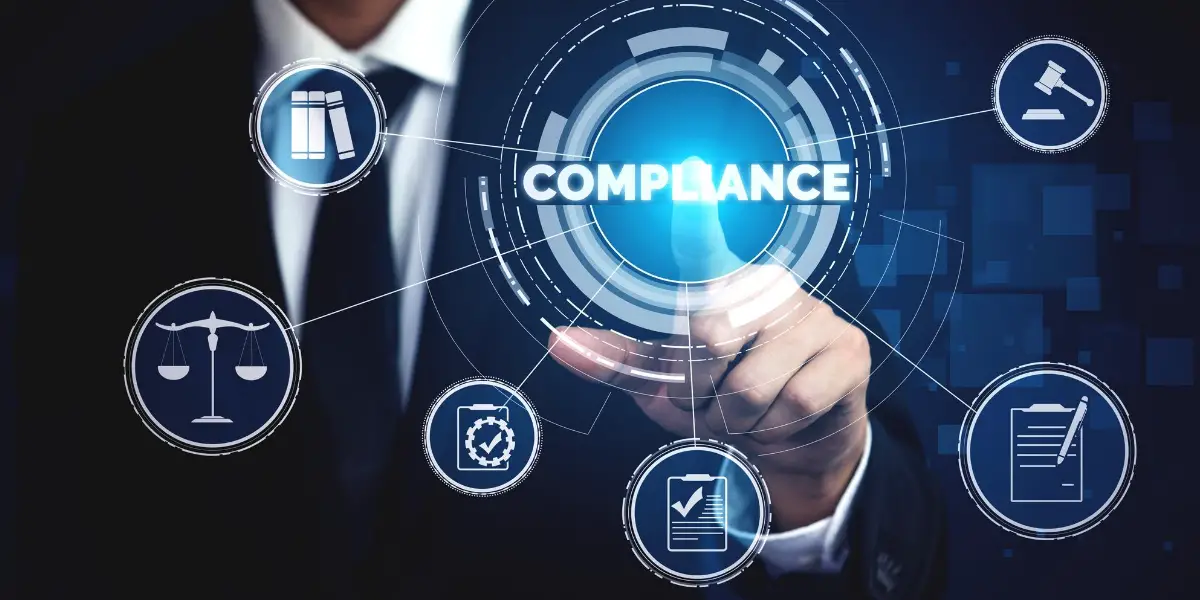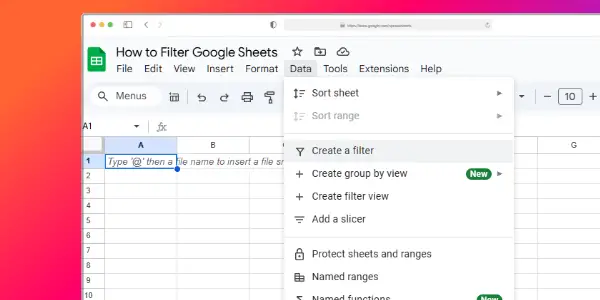Program Management is a complex and often challenging process that involves many different stakeholders and is subject to many regulations, policies and procedures.
In order to ensure the success of a program and its objectives, a strong emphasis must be placed on adherence to the regulations and standards that exist in the program area.
Compliance in program management processes can be guaranteed by implementing an effective compliance management system that includes procedures and policies that help ensure compliance with applicable laws, regulations, and standards.
Additionally, organizations should conduct audits to monitor program performance and use appropriate penalties for violations of the system.
This introduction will provide an overview of compliance in program management and some strategies to guarantee compliance is maintained:
Definition of Compliance
Compliance, as it relates to program management processes, is the adherence to regulations, laws, industry standards and accepted best practices.
Program managers are responsible for making sure that their projects comply with relevant laws and regulations. Non-compliance can lead to legal action against the organization, significant financial penalties, and reputational damage.
Program managers must ensure that appropriate controls are in place to manage the project management process to reduce risk of non-compliance and maximize success.
There are several steps that program managers can take to ensure compliance with applicable regulations, laws and standards:
- Develop an understanding of applicable regulations or laws: Program managers should research pertinent regulation or laws affecting their industry sector in order to identify any potential compliance issues they might encounter during project execution.
- Identify internal controls: Internal controls should be established in order to achieve program objectives while minimizing the risk of violating any applicable regulations or laws (e.g. internal controls may include an appropriate review process for procurement documents; a clear protocol for accepting cash payments).
- Establish a process for documenting activities: Documentation of activities can be critical for demonstrating compliance (e.g., activity logs detailing every decision made).
- Monitor activity: Routine monitoring of activity is important in order to ensure that control processes remain effective over time and there is a reduced likelihood of setting up conditions where violations may occur (e.g., regular internal compliance reviews).
Definition of Program Management
Program management is the process of effectively planning, monitoring and overseeing multiple projects, programs, or portfolios to ensure projects are strategically aligned and, when combined, achieve desirable outcomes.
Program managers play a key role in ensuring an organization is able to meet its goals and objectives by leading larger initiatives that involve resources from other departments.
By building on the principles of project management, program managers are in a unique position to bring a unified purpose and common vision across multiple projects and initiatives.
The primary focus of program management is to minimize risks associated with executing multiple efforts that are spread across different stakeholders who require coordination of resources and effective communication.
To ensure compliance, organizations need to have established governance structures that closely monitor how each program progresses with regular reviews as well as making sure there are written policies and procedures aligned with relevant standards.
Good project management processes also include solid strategies to ensure execution is aligned with objectives while keeping teams motivated through clear expectations for timely completion:
- Establish governance structures that closely monitor how each program progresses with regular reviews.
- Write policies and procedures aligned with relevant standards.
- Create strategies to ensure execution is aligned with objectives.
- Keep teams motivated through clear expectations for timely completion.
Program Management Processes
Programs are complex projects that require a defined set of processes for successful completion. It is essential for organization to ensure compliance in program management processes to achieve desired results.
Program management processes involve different stages of planning, execution and monitoring of the program. These processes must be documented, communicated and adhered to, so compliance can be guaranteed.
Let us look into this further and explore the different ways’ compliance can be ensured in program management processes:
Establishing Program Objectives
When it comes to ensuring that your program management processes are compliant, one of the most important steps is establishing program objectives. Program objectives should clearly define the scope and purpose of the program and ensure that it is measurable and achievable. Program objectives provide a benchmark for tracking progress, assessing success, and addressing any compliance issues that arise as part of the process.
When setting up program objectives, it’s important to ensure you are writing them in a standardized way so they can be assessed without bias or misinterpretation.
Program objectives should use SMART criteria—specific, measurable, attainable, relevant and time-bound—to ensure the objective reflects exactly what’s expected from the project.
Additionally, each step in the program management process should include its own set of specific objectives than can be used to assess compliance throughout each stage of implementation.
By defining your organization’s compliance goals early on in program management processes and keeping these goals up-to-date throughout implementation, you can help to reduce risk or liability while creating sustainable programs that accommodate changing needs over time.
Defining Program Scope and Requirements
A defined program scope and associated requirements provide the needed structure and focus for a successful program. Defining any processes necessary to guarantee compliance starts with a clear understanding of the operational needs, capabilities, budget, and timeline of the program.
The first step in defining program scope and requirements is to define objectives for the initiative – what is it intended to achieve? From these objectives should then flow measurable goals that need to be achieved through successful implementation of related tasks or activities. By effectively communicating these goals throughout all layers of the organization, leadership can ensure compliance targets are met.
Once goals have been outlined, procedures must be established that will ensure compliance from design through delivery.
A process-oriented approach that establishes consistent methods of accomplishing tasks while achieving specific objectives is how organizations can ensure completion on time and within budget constraints.
Program reviews should also be established, conducted regularly at points where compliance or progress can be assessed, such as when milestones are reached or when change orders are made.
To guarantee compliance during program management processes, also make sure you have properly documented all activities as they occur so they will serve as tangible evidence at later points in time.
Documentation should include information on who performed tasks and when they occurred; this will give realistic timelines for work completion providing effective metrics against performance standards.
For future validation purposes, materials used during the process should also be archived in an indexed library for efficient reference if needed during later stages in a project’s life cycle .
Developing Program Strategies
Creating an effective program strategy requires understanding of the overall environment within which the program operates, as well as any existing regulations or guidelines that need to be followed.
Establishing clear objectives is a key part of coming up with the best strategy for a program, and those objectives need to be well documented and monitored over time.
Strategies for meeting the objectives should incorporate both short-term and long-term goals and processes. Policy statements, risk assessments, problem definitions, and solutions can all help increase clarity when developing strategies.
When it comes to complying with regulations and guidelines in program management processes, internal audit procedures are one of the most effective ways to guarantee compliance.
Internal audit procedures involve regularly assessing compliance with policies, procedures and standards to ensure they are being followed correctly.
Each audit should document findings and provide recommendations on areas that require improvement or further action in order to remain in full compliance with all relevant laws, regulations and standards.
An established monitoring system allows organizations to review their own performance on an ongoing basis rather than wait for external reviews or audits from third parties.
Establishing Program Governance
Program governance is fundamental in ensuring that program management processes remain compliant with jurisdictional requirements and industry best practices.
Effective program governance should be implemented through the development of roles, responsibilities, policies and procedures that enable a clear understanding of who is accountable to make decisions and enforce compliance obligations.
Program governance should include a comprehensive framework that identifies the legal parameters required to conduct its activities and maintain compliance with applicable regulations and laws.
Depending on the scope of your program, this may also include compliance across different jurisdictions or regions, with an array of associated implications on any potential deviations from key regulatory standards.
This necessitates centralizing decision-making led by one program leader or executive responsible for setting out expectations for members within the team about adherence to compliance protocols.
Additionally, one effective way to ensure teams are mindful of obligations is by establishing regular meetings and forums in which compliance issues can raised and discussed on an ongoing basis.
Such meetings can trigger pro-active conversations about restrictions, obligations, safety measures etc., which can help identify any possible issues ahead of time versus when it’s too late after something has already gone wrong.
In essence many organizations use such sessions as opportunities to gain feedback from stakeholders as a means of further solidifying their approach towards achieving their desired goals while also adhering to all pertinent rules and regulations at hand.
Guaranteeing Compliance in Program Management Processes
Compliance is a critical part of program management processes, as it ensures that all the processes are performed in accordance with industry regulations and standards.
There are a number of measures that can be taken to guarantee that compliance requirements are met. In this article, we will discuss the different methods that can be used to guarantee compliance in program management processes:
Establishing Clear Policies and Procedures
In order to guarantee compliance in program management processes, organizations must establish clear policies and procedures. This includes:
- Identifying and documenting the process steps required to achieve the desired outcome of a program
- Detailing who is responsible for each step
- Outlining responsibilities and accountabilities
- Setting up measures of performance/quality control standards
- Ensuring that all stakeholders are aware of their respective obligations
It is also important to ensure that all elements of the program are tracked throughout its lifecycle in order to remain fully compliant.
Organizations should strive to proactively manage audit results and address any deficiencies identified as quickly as possible.
This will help ensure regulatory compliance by guaranteeing the organization has established comprehensive controls over its activities, eliminated any gaps or discrepancies in existing processes, documented key activities diligently throughout the entire project process, addressed audit evaluation findings on a timely basis, implemented corrective action plans where needed and successfully passed follow-up audits with satisfactory ratings.
By taking these steps, organizations can ensure that their programs remain compliant with applicable regulations while optimizing operational efficiency and avoiding potential risks associated with non-compliance.
Additionally, incorporating effective process management into existing operations can provide greater awareness regarding potential areas of improvement or development within an organization’s overall program management strategy.
Developing a Compliance Monitoring Plan
Creating a compliance monitoring plan is one of the most effective ways to ensure that program management processes remain compliant.
A compliance monitoring plan should include documenting important regulations and standards, as well as developing a system for tracking progress and results regarding compliance. This will help organizations stay on track toward achieving their compliance goals.
When developing a compliance monitoring plan, it is important to consider the following steps:
- Identify regulatory requirements and any other applicable standards which will be monitored for program management processes
- Develop a system for tracking progress and results related to these requirements
- Develop methods for reporting on performance, ensuring accuracy
- Identify any constraints or risks associated with implementing the plan, such as budget limitations or other administrative barriers
- Create a policy for addressing any noncompliance issues, including corrective action when needed
- Monitor existing programs to assess their effectiveness in regards to program management processes.
Implementing Effective Compliance Training
Training your program management staff on how to comply with the relevant regulations and laws governing the program performance is one of the most important aspects of implementing an effective compliance plan.
By investing in comprehensive compliance training, you will be able to ensure that all personnel involved in managing your program are familiar with project specific rules and policies, as well as industry guidelines and standards.
When developing a compliance training program for personnel managing programs, it is important to consider both internal manuals and external sources.
Internal manuals should clearly define procedures for respective processes along with relevant guidance for each procedure.
Additionally, such documents must address services rendered within the scope of work, specific client requirements when applicable, the complexity or sensitivity of certain projects, process related objectives, etc.
Furthermore organizations should review their processes regularly in order to stay informed about new developments and trends regarding industry guidelines or standards that could affect their operations.
Besides internal documents and manuals it’s also important to consult external sources such as government departments/agencies responsible for particular industries/groups served by program management personnel or consultancies offering specialized training/certification services on technical proficiency-related topics such as project quality control or planning.
In some cases organizations may find it beneficial to seek legal advice in order to cover any potential liability issues related to non-compliance activities.
An effective compliance training scheme should also include evaluation tests which can provide useful data regarding employees’ performance levels over time as well as provide insight into any problematic areas which need further attention or improvements before they can cause serious problems down the road.
Ultimately, establishing a robust compliance culture within an organization’s managerial staff will help reduce risk and ensure smooth uninterrupted operation of procedures that are key for programs being delivered successfully.
Establishing an Effective Communication System
In order to ensure that program management processes remain compliant with regulations, it is essential to establish an effective communication system among all stakeholders.
The communication system should provide a clear understanding of the roles and responsibilities of each team member as well as the protocol for how information should be exchanged throughout project execution.
Additionally, channels should be established for informants to report misuses or inefficiencies to help strengthen compliance with regulations.
All team members need to understand their roles and how those roles interact with each other in alignment with program goals.
Effective communication begins by picking a sole point of contact who can relay information and coordinate activities between members of the team.
This individual could be someone from outside the program or an internal program manager.
They should have extensive knowledge of the regulatory guidelines set out by the organization and ensure that any changes are communicated properly throughout all levels of developing projects.
Aside from relaying instructions, this point of contact should also ensure that progress updates are closely monitored and reported in real-time.
Teams might consider investing in an online project management platform to stay organized and alert concerning milestones achieved against planned measures, although there are many free options out there as well that could fit smaller teams’ needs.
This is one way teams can safeguard against discrepancies related to misaligned expectations or lack thereof among team members moving forward throughout the process.
Conclusion
In conclusion, compliance in program management processes can be achieved by providing clear objectives for all stakeholders.
Organizations should establish set principles and guidelines around implementation of program management processes and use these as the basis for monitoring progress and ensuring that any deviations therein are managed.
Transparency and shared responsibility among stakeholders also contribute to enhanced compliance, while having the right tools available ensures that program managers have access to the necessary data to track progress on projects.
Finally, audits are an important component of any compliance strategy as they provide oversight on process adherence while also providing valuable feedback on best practices or areas of improvement. All of these elements must be considered together to ensure successful program compliance outcomes.
How Important is Mathematical and Coding Skills in Ensuring Compliance in Program Management Processes?
Effective program management skills are required to ensure compliance in complex projects. Strong mathematical and coding abilities play a vital role in analyzing and interpreting data, identifying patterns, and creating efficient processes. With these skills, program managers can make informed decisions, adapt to changes, and ensure successful program outcomes.
Frequently Asked Questions
What is compliance in program management?
Compliance in program management is the process of adhering to regulations, guidelines, and standards to ensure that all work is completed in accordance with established requirements.
What steps can be taken to ensure compliance in program management?
Steps that can be taken to ensure compliance in program management include establishing clear guidelines and standards, performing regular audits and reviews, and implementing a formal reporting process.
What are the benefits of compliance in program management?
Benefits of compliance in program management include improved accuracy and efficiency in processes, increased customer and stakeholder satisfaction, and reduced risk of legal and financial penalties.





